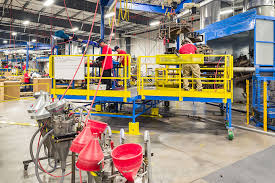
Design Considerations for Rotational Molding Parts
Rotational molding is really a process utilized to generate hollow plastic goods. It is often accustomed to make parts for h2o tanks, playthings, and in many cases big car components. But what exactly is rotational molding and how will it function? Let’s have a look at the essentials of Rotomolding so you will have a greater understanding of this useful manufacturing method.
Exactly What Is Rotational Molding?
Rotomolding molding is a developing process that uses warmth and pressure to create molten plastic-type material into hollow styles. The procedure starts with putting unprocessed plastic-type material in a open up, stainlesss steel mold which has been divided into two halves. The mold is going to be warmed up up in an your oven till the plastic material melts. Once melted, both the halves of your mold are clamped together and rotated while they transfer through three axes—the By axis (horizontal), Y axis (vertical), and Z axis (diagonal). Since the parts turn, centrifugal power triggers the liquefied plastic material to open up equally along the internal top of the mold. This produces a slender layer of plastic material that sticks for all aspects of the item when cooled down.
Benefits associated with Rotational Molding
A single main benefit of rotational molding over other types of plastic forming functions is being able to generate hollow elements with complex geometries. Moreover, since no strain or pressure is necessary to form these sections, you will find much less disorders and much less lost substance in comparison with processes for example injections or blow-molding. Also, simply because molds might be swiftly modified between generation works with small effort or expenditure, rotational molding now offers smaller direct instances than many other developing functions. Ultimately, since it utilizes only temperature and gravitational forces during generation, it needs much less energy than other processes do which makes it an eco friendly selection for producers looking for lasting options with regard to their creation requirements.
Conclusion:
Rotational Molding is one of a lot of useful producing processes on the market today which can help convert unprocessed supplies into completed merchandise efficiently and quickly. Through the use of heat and movements, this procedure generates complicated designs without including any additional tension or strain about the fabric getting molded which helps reduce spend as well as reducing steer occasions when compared with other strategies including shot or blow-molding. Having its array of advantages from cost savings to environmental friendliness, it’s no wonder why this technique is now very popular among suppliers searching for dependable remedies with regard to their production requirements!